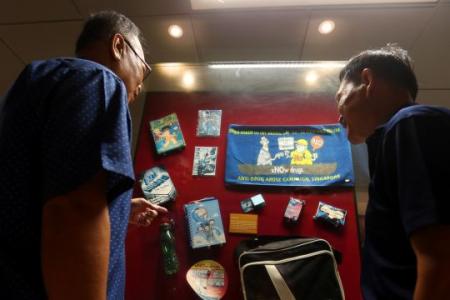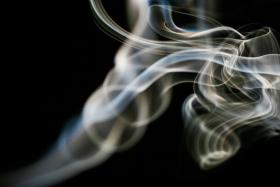'We could sniff out opium dens on our own': Retired CNB officers on their job in the 1970s
Opium was a problem in Singapore for almost 100 years, with smoking dens tucked in Chinese enclaves, especially where the coolies worked, but a new trend emerged from the 1960s - the use of heroin and cannabis among young people.
Between 1969 and 1974, 65 people died in cases related to illicit drugs. More than half were found dead in the streets.
The drugs of choice included opium, cannabis, heroin and the prescription drug MX used as a sedative.
On Oct 19, 1971, the Government announced a new agency - the Central Narcotics Bureau (CNB) - with the mandate of dealing with the drug menace, a task previously carried out by the Central Investigation Department and Singapore Customs.
CNB, which marks its 50th anniversary this year, was officially formed a month later.
Mr Tan Kong Hai and Mr Teo Chin Seng were in their 20s when they joined the fledgling agency.
Mr Tan, who retired as a deputy superintendent in 2009, recalled that officers quickly developed "a nose" for the job.
"For opium dens, the smell (coming out of the den) was strong and pungent. Whether they were cooking or smoking opium, I could smell it from far away," said the 67-year-old.
"But after we set up CNB and after we started Operation Ferret, by February 1978, 26,000 abusers had been arrested," he noted.
In 1975, CNB had its biggest seizure of MX pills - 30,000 - which were worth $45,000 then. But the threat remains.
In March this year, it seized about 20.5kg of cannabis - the largest haul of the drug in about 14 years.
That record was broken the next month when 23kg of cannabis, 16kg of heroin and other drugs were seized.
Said Mr Tan, who was appointed in 1997 to lead a new Special Task Force (STF) that targets traffickers: "Previously, we didn't have advanced equipment (to break into drug dens). We used mostly crowbars and cutters, not electrical equipment."
Today's STF officers have sophisticated tools to gain quick entry into a trafficker's lair.
The unit invests in modern technology, such as devices that use radar technology to see through walls, and rigorous training, which includes having officers in the elite unit shot at with non-lethal bullets.
Retired officers said their families knew their jobs were not without risks.
Many traffickers hid parangs (large, heavy knives) and other weapons in their cars or lorries, said Mr Tan, who had in the past found threatening messages on the windscreen of his car parked outside his home.
But Mr Teo said one chance encounter with a former drug trafficker surprised him.
He and his wife had finished watching a movie some years back when a former inmate, who was released after a 15-year sentence, bumped into him.
He told Mr Teo, who had handled his case, he needed a job.
Mr Teo said: "I was apprehensive at first because he had surprised me and I didn't recognise him. What I did was to refer him to CNB's Job Placement Unit.
"The incident was amicable. I think if you are fair and just in dealing with them, they will respect you."
The coolies of the early days are gone. Today's drug user is educated and employed.
CNB director Ng Ser Song noted the contribution of the pioneer officers.
"We commemorate our golden jubilee this year, and it is an opportune time for us to pay tribute to past and current generations of CNB officers who contributed significantly to the drug-free cause through hard work, sacrifices and a strong sense of purpose," he said.
Get The New Paper on your phone with the free TNP app. Download from the Apple App Store or Google Play Store now


